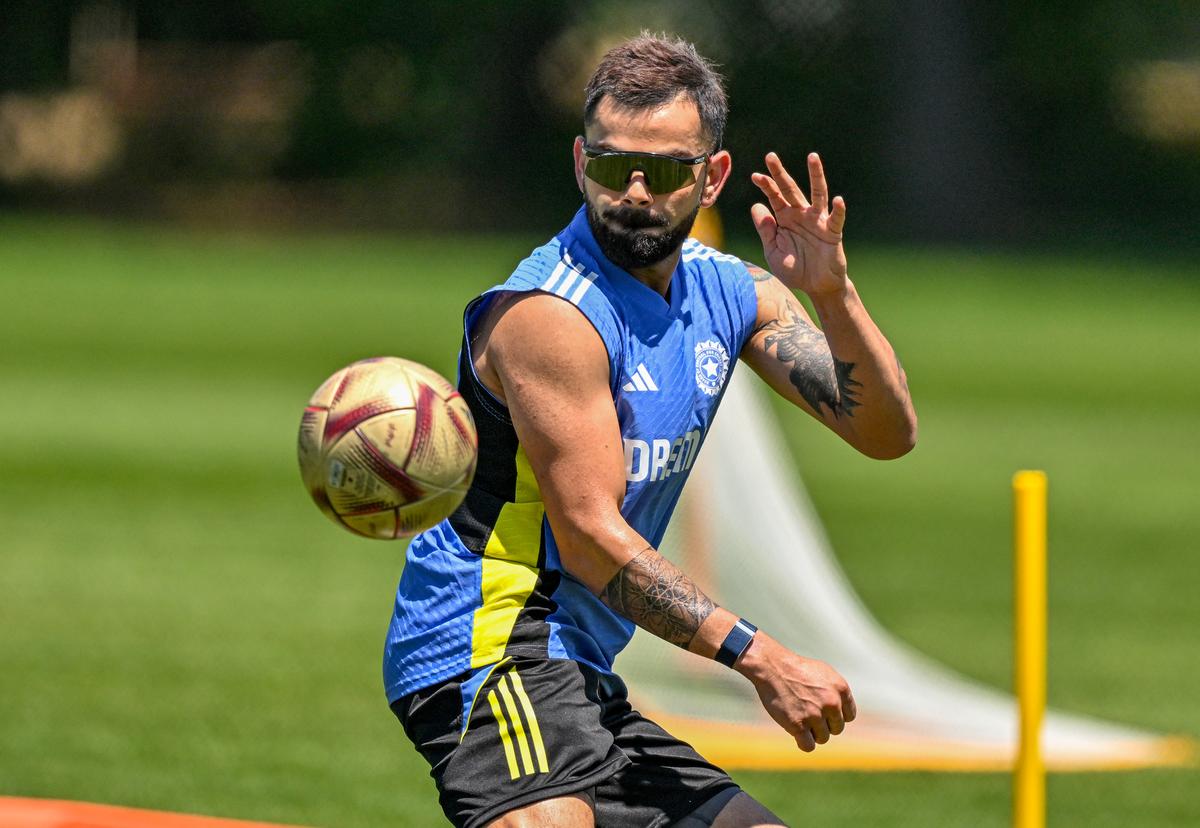One of the great gripes about international cricket in the past was that it was extremely elitist. Until 2018, only 10 teams played Test cricket — that number now stands at 12 — but not all of them at necessarily the same competitive level. The balance in power, complemented by commercial ramifications, meant that the bigger nations played against themselves often and left the rest content with crumbs. That’s how market forces pan out sometimes. The romantic notion of a level-playing field does not exist in competitive sport, which draws a distinct line between the haves and the have-nots (not in the talent stakes, it must be stressed).
Test cricket is a daunting, challenging, often unrewarding format. It requires so much investment, of will as much as anything else, and therefore isn’t naturally the most alluring when there is so much more to play for. Gone are the days when cricket revolved around the five-day game, with the one-day variant largely contributing to amusement until it became a beast that could stand on its own. Today, even 50-over cricket has become a sideshow with the onus on instant gratification and immediate results, thanks to the mushrooming of 20-over cricket as well as other even more abridged formats that, thankfully, haven’t yet spawned country vs country showdowns.
Lobbying hard
The International Cricket Council has, over the last several years, been mindful of taking cricket to as many countries globally as possible. Towards that end, the ICC lobbied hard and succeeded in ensuring that cricket returned to the Olympics at Los Angeles in 2028, the 20-over format the ideal vehicle through which to regain Olympic approbation. Once the ICC became conscious of the need for cricket to spread its tentacles worldwide through the T20 version, more and more nations were attracted to the sport because all T20s were being given international status. At the last count, there are 80 men’s teams and 70 women’s teams, among them Gibraltar and Eswatini, who enjoy international status when it comes to the T20 game.
Against this backdrop, it’s hardly surprising that the latest edition of the T20 World Cup, which started on Saturday, has both travelled to reasonably uncharted territory and encompassed the most nations ever to have played a cricket World Cup. Alongside the Caribbean islands, who also hosted the T20 World Cup in 2010, the United States are the co-hosts of the 2024 competition, an acknowledgement of the strides the once cricket-ignorant nation has made in recent times as the potential for the commercial and marketing possibilities that abound in what has traditionally been the land of basketball and ice hockey, of baseball and gridiron.

A view of the Nassau County International Cricket Stadium in Eisenhower Park in New York.
| Photo Credit:
K.R. DEEPAK
Less than a third of the 55 matches in the World Cup are being staged in the US, but the fact that India will be playing all its league fixtures there — three in New York and the other in Florida — and that the final before the final at any World Cup, India vs Pakistan, will be staged at the Nassau County International Cricket Stadium in New York means even when the tournament shifts in its entirety to the West Indies from the Super Eight stage onwards, the American leg will remain a talking point.
In addition to the roping in of the US as a co-host, the ICC has expanded the field for this year’s flagship T20 competition to a record 20 teams. Among those making their World Cup debuts are the United States (who played in the Champions Trophy in 2004 in England), Canada, Uganda and Papua New Guinea.
It’s unthinkable that even a half-dozen years back, any or all of these countries would have imagined being part of a cricket World Cup. That they are where they are now is a testament both to their desire to announce themselves on the bigger stage and the robust mechanisms employed by the ICC to attract and sustain the interest of the majority that exists beyond the traditional outreaches of the sport.
A shot in the arm
The interest that Saturday night’s opening fixture between the USA and Canada generated is a shot in the arm for the tournament. Braving forecasts for bad weather and overcoming ticketing issues that threatened to leave the Grand Prairie Stadum in Dallas reasonably unpopulated even though its official capacity is no more than 7,000, upwards of 6,000 fans crammed the venue to partake of the co-hosts’ seven-wicket drubbing of their North American neighbours.
That victory was set up by Aaron Jones, a Queens, New York-born 29-year-old who has previously represented Barbados, made the result even sweeter. After all, for cricket to really take off, it is imperative that the local diaspora makes its presence felt because, let’s face it, it can’t be sustained only from patronage from the expats.
Some might argue that given so many avenues that are open for entertainment, even from a sporting perspective, the chances of the shortest international cricketing pursuit, which lasts nearly three and a half hours, making a mark are minimal in a land where patience might often appear to be at a premium.
Much the same doubts abounded when the US won the right to stage the 1994 FIFA World Cup, which turned out to be a resounding success and provided such a shot in the arm for ‘soccer’, as they call it in these parts of the world, that the US women’s national team surged to the No. 1 ranking in the world. It will take a long, long, long while — if at all — before that happens in cricket, you suspect, but then again, what is sport without the promise of a fairytale?
Good or not so good?
So, 20 teams then, eh? Good thing, or not so good? Will it allow the ‘lesser’ nations to rub shoulders with the best in the business and take away lessons even in crushing defeats, which could be more than spectacular upsets? Will it give them a taste of life in the uppermost echelons and open their minds and eyes to what the established players do to become the successes they are now? Will it enable them to see that even the acknowledged superstars, the Kohlis and the Maxwells, the Poorans and the Babars, are also cut of the same cloth but have reached where they are through sheer dint of hard work and unwavering commitment?

India’s Virat Kohli practising at the Cantiague Park in New York.
| Photo Credit:
K.R. DEEPAK
Or, will it ‘dilute’ the field, as many believe? Will it translate into numerous one-sided matches that will take the sheen off the competition before it enters the business end in the third week of June when the tournament shifts to the Caribbean for the Super Eights and the knockouts? Will big losses serve as deterrents to the newcomers and shatter their motivation and hunger and desire? Will it expose them to the huge gulf that exists between them and, say, the top six or seven teams in the world?
On balance, one would have to say that more good will come out of this extended tournament schedule, that the positives will far outweigh the negatives. There have been some remarkable tales of success and resilience in the T20 World Cup itself, including Zimbabwe’s unexpected upset of Australia in the inaugural edition in 2007 and the Netherlands’ conquest of England in the latter’s own backyard in the next edition, two years later. Zimbabwe of 2007 bore no resemblance to teams of an earlier vintage that included Flower brothers Andy and Grant, Alistair Campbell, Dave Houghton, Eddo Brandes, Heath Streak, Henry Olongo, Paul Strang… The Netherlands were more spirit and promise than experience and tactical nous. Their victories might not have triggered a change in the world order but then again, Rome wasn’t built in a day, was it?
For cricket to become a truly world sport, it’s not just enough if more teams enjoy international status. They must also start to develop, step by small step, both when it comes to physical infrastructure and to a cricketing structure that fosters talent and hones it to its best form. It is a long process, without a doubt – a case in point being Indian football, which for all the infusion of money and exposure to higher standards through the ISL continues to struggle to establish itself as a strong force even in Asia – and needs patience as well as a long-term commitment, but that’s the way to go, of that there is little doubt.
The US’ first experience of big-ticket cricket, at the Champions Trophy in 2004, was an unmitigated disaster – New Zealand thumped them by 210 runs and Australia knocked them over for 65 – and yet here they are, the first side to register a win in the 2024 T20 World Cup as the co-hosts, an eventuality not many would have predicted even a decade back.
It’s on the back of such stories that sport, any sport, grows; football has shown the way and it might be somewhat naïve to expect cricket to follow the same path because the needs and demands of the two disciplines are so vastly different. But there is a template that can be tweaked and customised, which is why this particular T20 World Cup assumes so much importance. After all, in sport, it is not always about the winning, is it?
